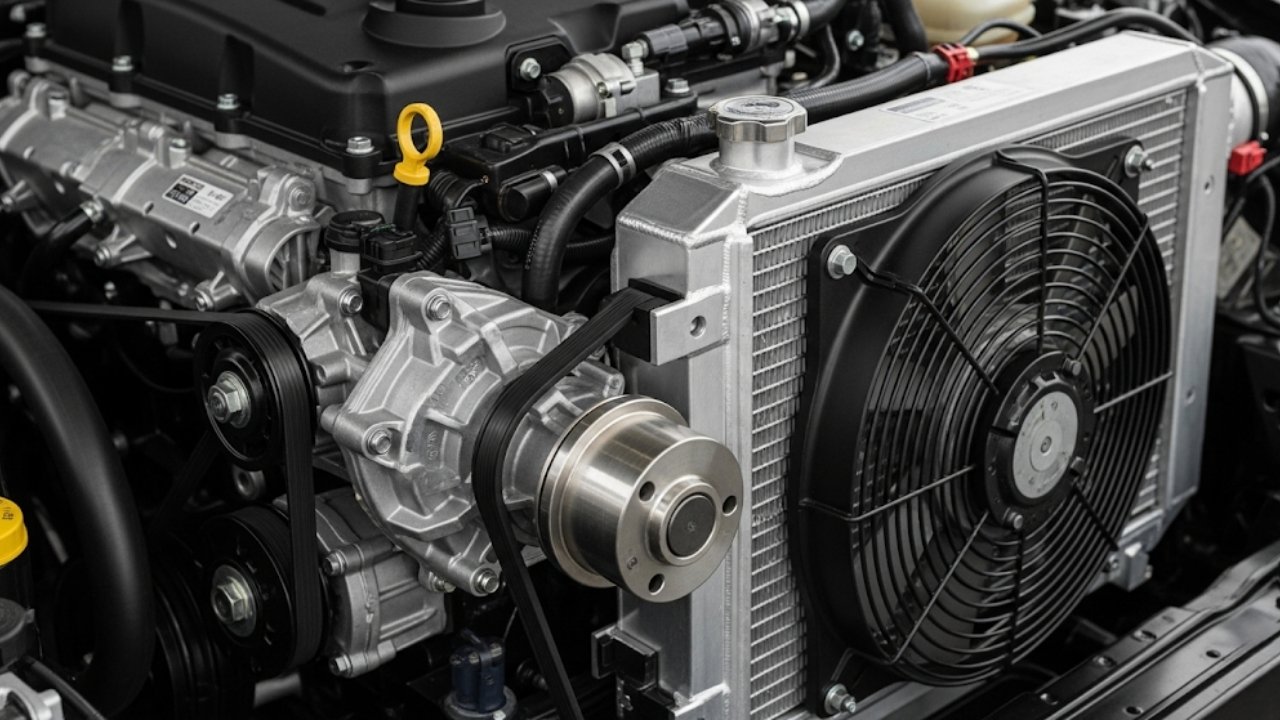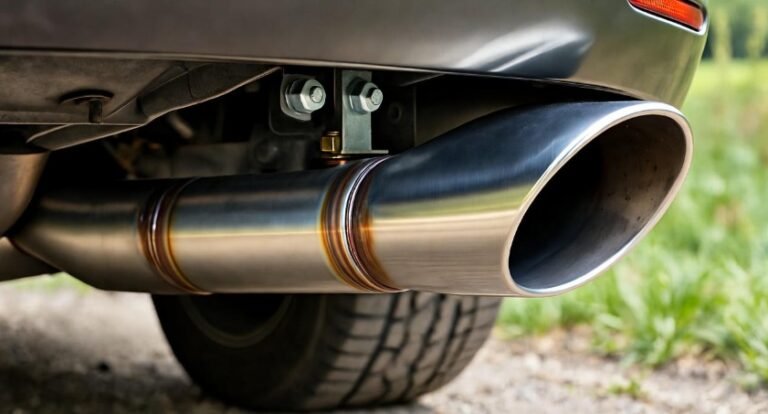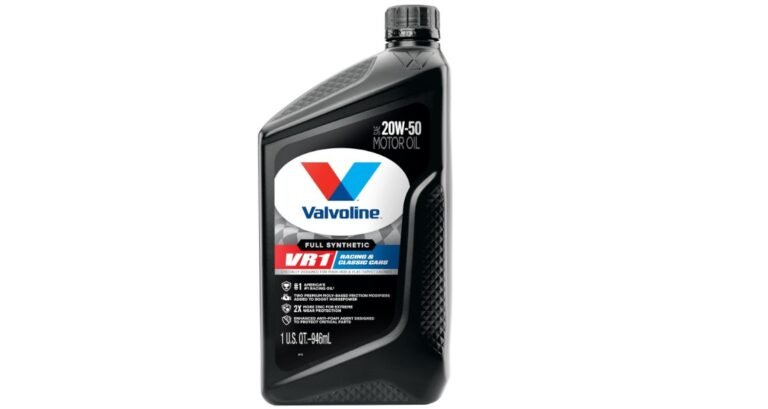Keep Your Engine Cool: The Honest Truth

If you’ve ever driven in summer heat or been stuck in traffic with your A/C running full blast, you know how hard your car’s engine works. It’s like your car is sweating to keep going. And just like us, when it gets too hot, bad things happen. That’s where the car engine oil cooler steps in—like a cold bottle of water on a sweltering day.
But most people don’t think about this small but mighty component. I didn’t either—until I noticed my car overheating even though my coolant levels were fine. What was the problem? It turned out to be my engine oil cooler, quietly doing its job until it gave up. That one part saved my engine from serious damage… when it worked.
In this article, I’ll explain everything you need to know about a car engine oil cooler—what it is, how it works, why it matters, and what happens when it fails. I’ll keep it simple and real, like a chat between friends who love their cars.
What is a Car Engine Oil Cooler?

When engine oil gets too hot, it thins out. And when it thins out, it stops protecting your engine. This is how wear and tear sneaks in. A good engine oil cooler keeps oil temps steady, so your engine lives longer, works better, and costs less to maintain.
Why is it necessary?
Here’s why a car engine oil cooler is a game-changer:
-
It prevents oil breakdown from overheating.
-
It improves engine performance under heavy load.
-
It protects critical parts like pistons, camshafts, and bearings.
-
It extends the life of engine oil, meaning fewer oil changes.
-
It reduces the risk of engine seizure during summer heat.
Some cars come with oil coolers from the factory. Others—especially smaller or older cars—don’t. But if you drive hard, tow loads, or live in a hot climate, installing one can be a smart move.
How Does a Car Engine Oil Cooler Work?
A car engine oil cooler looks a lot like a tiny radiator. It has metal fins and narrow tubes that let oil flow through it. It’s usually placed in front of the main radiator or near the front bumper so that fresh air can hit it directly.
Here’s a simple breakdown of how it works:
-
Hot engine oil leaves the engine.
-
It flows into the oil cooler.
-
The oil passes through cooling fins and tubes.
-
Airflow over the fins removes heat.
-
The cooler oil returns to the engine, keeping it from overheating.
There are two main types:
| Type | Description | Common Use |
|---|---|---|
| Air-cooled | Uses outside air to cool oil. Easy to install. | Performance cars, aftermarket setups |
| Water-cooled | Uses engine coolant to cool the oil. More compact. | Newer factory-fitted systems |
Most aftermarket kits use air-cooled systems, which are simple and effective. But if you want something seamless and compact, a water-cooled oil cooler might be ideal.
Signs of a Failing Engine Oil Cooler
I’ll be honest—when my oil cooler failed, I had no idea at first. The signs were there, but I missed them. Learn from me. Here are the red flags you should watch out for:
-
Overheating engine, even with normal coolant levels.
-
Oil leaks near the cooler or hoses.
-
White smoke from the exhaust (coolant mixing with oil).
-
Low oil pressure or warning lights.
-
Burning oil smell when driving.
Ignoring these symptoms can lead to engine damage, high repair bills, and even total failure. In my case, I caught it early. But a friend of mine wasn’t so lucky—his turbocharged sedan blew a head gasket due to overheating oil.
What happens if you ignore it?
-
Your engine oil loses viscosity.
-
Bearings and pistons get too hot.
-
Your engine may seize under load.
-
Repair costs skyrocket—from $100 for a cooler to $4000+ for a new engine.
Don’t take this part lightly. A car engine oil cooler might be small, but it protects the heart of your vehicle.
Do You Really Need One? Let’s Be Honest
Now here’s where it gets personal. Do you need a car engine oil cooler?
Well, that depends. I’ll break it down:
You definitely need one if:
-
You drive a sports car or modified engine.
-
You tow heavy trailers or haul loads often.
-
You drive in mountainous or desert climates.
-
You have turbocharged or diesel engines.
-
You go to track days or off-road events.
You might consider one if:
-
Your car frequently overheats.
-
You live in hot and humid areas.
-
You notice thinned oil after short mileage.
-
You want to extend engine life and reduce wear.
Probably not necessary if:
-
You drive short city commutes.
-
You live in a cold climate.
-
Your engine never gets too hot or overworked.
Adding an oil cooler is like giving your car a cooling towel. It’s not always essential—but when it’s needed, it’s a total lifesaver.
Benefits of Using a Car Engine Oil Cooler
Let’s talk pros. Adding a car engine oil cooler isn’t just about fixing a problem—it’s about future-proofing your vehicle.
Here’s why people swear by them:
-
Lower oil temperatures: Keeps things balanced under pressure.
-
Longer engine life: Less heat = less stress.
-
Improved fuel efficiency: Cooler engines run cleaner and smoother.
-
Higher performance: Especially for turbocharged or high-RPM engines.
-
Peace of mind: No more stressing in traffic or climbing hills.
Here’s a real-life moment: On a trip to Sylhet in peak summer, I drove up hilly roads with AC blasting. My cousin’s car without an oil cooler started steaming halfway. Mine? Steady and cool. That’s when I truly understood its worth.
Installing a Car Engine Oil Cooler: Should You DIY or See a Mechanic?
If you’re a hands-on car lover like my cousin Rafiq, you might be tempted to install a car engine oil cooler on your own. And hey, that’s not a bad idea—if you have the tools, patience, and some technical know-how.
But let me walk you through both paths: DIY and professional installation.
DIY Installation Overview
You’ll need a basic oil cooler kit, which usually includes:
-
The oil cooler itself (air or water-cooled)
-
Hoses and adapters
-
Mounting brackets
-
Hose clamps
-
Sandwich plate adapter (for routing oil)
Steps to install:
-
Drain the engine oil.
-
Mount the cooler where it gets good airflow.
-
Attach hoses from the engine block (via the sandwich adapter) to the cooler.
-
Check for leaks.
-
Refill with fresh oil and test drive.
This job will take 2–4 hours and a bit of sweat, but it can be rewarding. Just don’t rush it. A loose clamp or leaky hose can ruin your engine.
Professional Installation: What to Expect
If you’re unsure or just value peace of mind, a mechanic can do it professionally. Labor costs vary, but typically:
-
Cost of cooler kit: $100–$300
-
Installation cost: $150–$400 (depends on car and shop)
You get proper torque specs, leak testing, and warranty-backed service. That’s worth it if you’re driving long distances or towing often.
Maintenance Tips for Engine Oil Coolers
A car engine oil cooler doesn’t need a lot of attention, but ignoring it completely is risky. Like any other part, it can wear out or leak over time.
Here’s how to keep it in top shape:
Regular Checks:
-
Look under the hood for oil stains or dampness near the cooler.
-
Inspect hoses and clamps for cracks, bulges, or rust.
-
Check oil levels and color every 1,000 km. Milky or thin oil is a red flag.
Cleaning:
-
Use compressed air or soft brushes to clean dust and debris off the cooler fins.
-
If it’s near the radiator, clean both together to improve airflow.
Replacement:
-
Replace oil cooler hoses every 3–5 years.
-
If you see repeated leaks or poor cooling performance, consider replacing the entire unit.
Preventative care saves money. Always. I learned this the hard way when I ignored a small oil stain that turned into a $350 repair two weeks later.
How a Car Engine Oil Cooler Compares to Other Cooling Systems
A lot of people confuse engine oil coolers with radiators or transmission coolers. Let’s clear that up.
| Cooling Component | What It Cools | Main Benefit |
|---|---|---|
| Radiator | Engine coolant | Prevents coolant overheating |
| Transmission cooler | Transmission fluid | Protects gearbox from heat damage |
| Engine oil cooler | Engine oil | Improves engine oil temperature stability |
Each has its role. But they don’t replace each other. In high-performance or high-load conditions, your engine oil heats up faster than coolant. That’s why a separate car engine oil cooler is so essential in some cases.
Frequently Asked Questions (FAQs)
1. Is a car engine oil cooler necessary for daily driving?
For most city driving, it’s not essential. But if you drive in hot climates, do a lot of highway travel, or carry heavy loads, it becomes highly beneficial.
2. Can an oil cooler improve fuel efficiency?
Yes! Cooler engines operate more efficiently. That means the combustion process works better, and the engine doesn’t waste energy fighting heat. That leads to small but consistent gains in fuel economy.
3. What happens if my oil cooler fails?
Your engine oil will heat up too much, break down, and fail to lubricate properly. That leads to engine wear, overheating, and possibly engine failure. You’ll notice symptoms like low oil pressure, smoke, or burning smells.
4. Can I install a car engine oil cooler in any vehicle?
Mostly yes. Universal kits exist for most models. However, installation might be harder in compact cars with tight engine bays. Custom brackets may be required, and placement needs good airflow.
5. How long do oil coolers last?
A well-maintained engine oil cooler can last 7–10 years or longer. Most failures are due to rust, impact damage, or failing hoses—not the cooler itself.
Real Stories: The Day My Cooler Saved My Engine
A few months ago, I went on a road trip across the Chittagong Hill Tracts—steep climbs, long drives, blazing sun. Halfway into the second day, my cousin’s SUV (no cooler) was overheating like mad. My humble hatchback with an oil cooler? Smooth all the way.
That’s when I truly realized how this small part changed my driving confidence. No more white-knuckle stares at the temperature gauge.
Final Thoughts: Is a Car Engine Oil Cooler Worth It?
Let me leave you with this: a car engine oil cooler is one of the most underrated upgrades you can make, especially if you value your engine’s health and performance.
Yes, it’s a bit of an upfront investment. Yes, it takes time to install or maintain. But the benefits outweigh the costs, especially in heat, towing, or performance driving.
Whether you’re a daily commuter or a weekend racer, protecting your engine oil from overheating is like giving your car the gift of longevity. And that’s a gift every car deserves.




![Window Tinting Laws in Virginia [Updated, 2023]: What Every Driver Needs to Know Before Hitting the Road 7 Window Tinting Laws in Virginia [Updated, 2023] What Every Driver Needs to Know Before Hitting the Road](https://aautomotives.com/wp-content/uploads/2025/10/Window-Tinting-Laws-in-Virginia-Updated-2023-What-Every-Driver-Needs-to-Know-Before-Hitting-the-Road-768x412.jpg)

